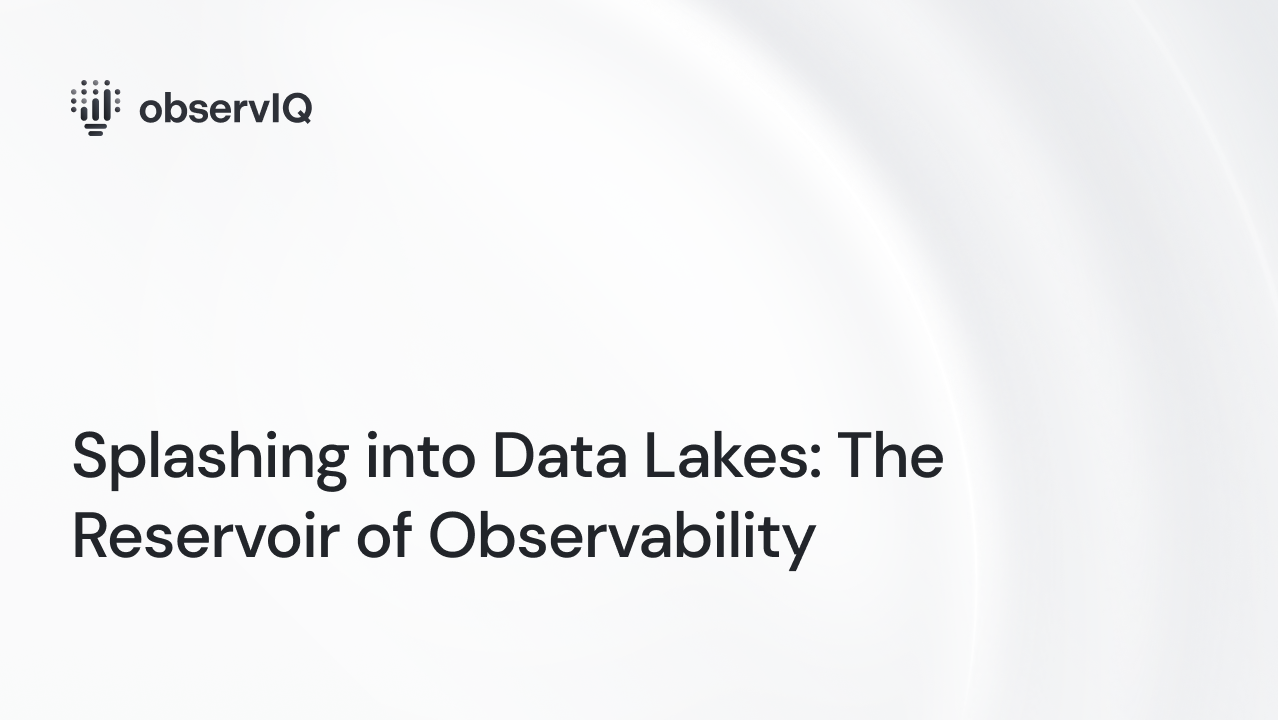Splashing into Data Lakes: The Reservoir of Observability

If you're a systems engineer, SRE, or just someone with a love for tech buzzwords, you've likely heard about "data lakes." Before we dive deep into this concept, let's debunk the illusion: there aren't any floaties or actual lakes involved! Instead, imagine a vast reservoir where you store loads and loads of raw data in its natural format. Now, pair this with the idea of observability and telemetry pipelines, and we have ourselves an engaging topic.
What's a Data Lake?
A Data Lake is a centralized repository that allows you to store structured and unstructured data at any scale. Imagine dumping everything from logs, traces, and metrics into a massive container. No need for defining structures beforehand; just send the data in. It's like storing water from different sources (rivers, streams, rain) into one vast lake.
Observability – Seeing Beyond the Surface
Observability isn't just about monitoring. It’s the art and science of understanding the state of your system by looking at its outputs. It’s the magical power of saying, “Ah! This error happened because of that misconfigured server!”
In the vast ocean of data, how do we make sense of it all? That's where observability pipelines come in!
Related Content: When Two Worlds Collide: AI and Observability Pipelines
Observability Pipelines – The BindPlane Canals of Insight
Think of observability pipelines as intricate canal systems. They channel water (or in our case, data) from the lake, filter out impurities, and guide it smoothly to the places it's needed the most. An observability pipeline takes raw, unstructured data, processes it, and then sends it off to monitoring tools, dashboards, or alerting systems.
Here's how Data Lakes make observability pipelines even more powerful:
Volume & Variety: Data lakes can store massive amounts of data. So, whether you're collecting logs from a new service or tracing data from a legacy system, there's always room in the lake.
Agility: Need to modify or introduce a new data source? With a data lake, you don't need to re-architect everything. Just introduce your new data; your pipelines can adapt to pull from it.
Advanced Analysis: Because all the data resides together, you can use advanced analytics and machine learning to derive more profound insights. Want to predict when a particular service might fail? Dive into the lake of past data and let the algorithms swim!
Cost-Efficient: Storage solutions for data lakes are typically designed to be scalable and cost-effective. So you’re not breaking the bank while trying to get a clearer picture of your systems.
Related Content: Maximizing ROI By Reducing Cost of Downstream Observability Platforms With BindPlane OP
Making Waves with Data Lakes
In the rapidly evolving tech environment, the need to understand our systems in real time has never been more crucial. But as we all know, with great power (or data) comes great responsibility. Using a data lake coupled with observability pipelines ensures that your data is stored efficiently and working hard to give you the insights you need.
So the next time someone mentions "data lakes", envision this vast reservoir of insights, ready to be tapped. Whether you're troubleshooting a tricky issue or trying to optimize system performance, remember that the answer might just be lurking beneath the surface.
For questions, requests, and suggestions, reach out to us or join our community slack channel.



